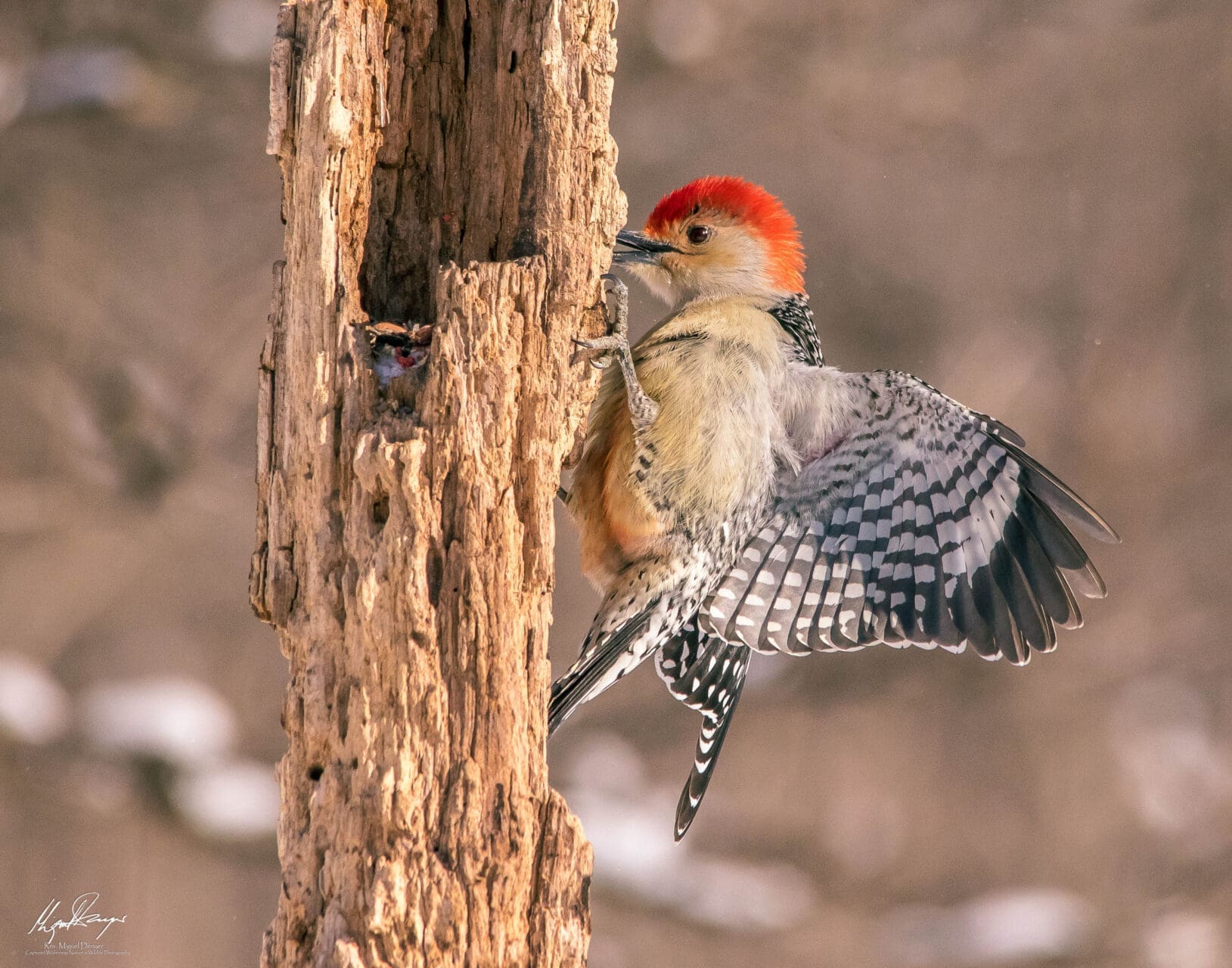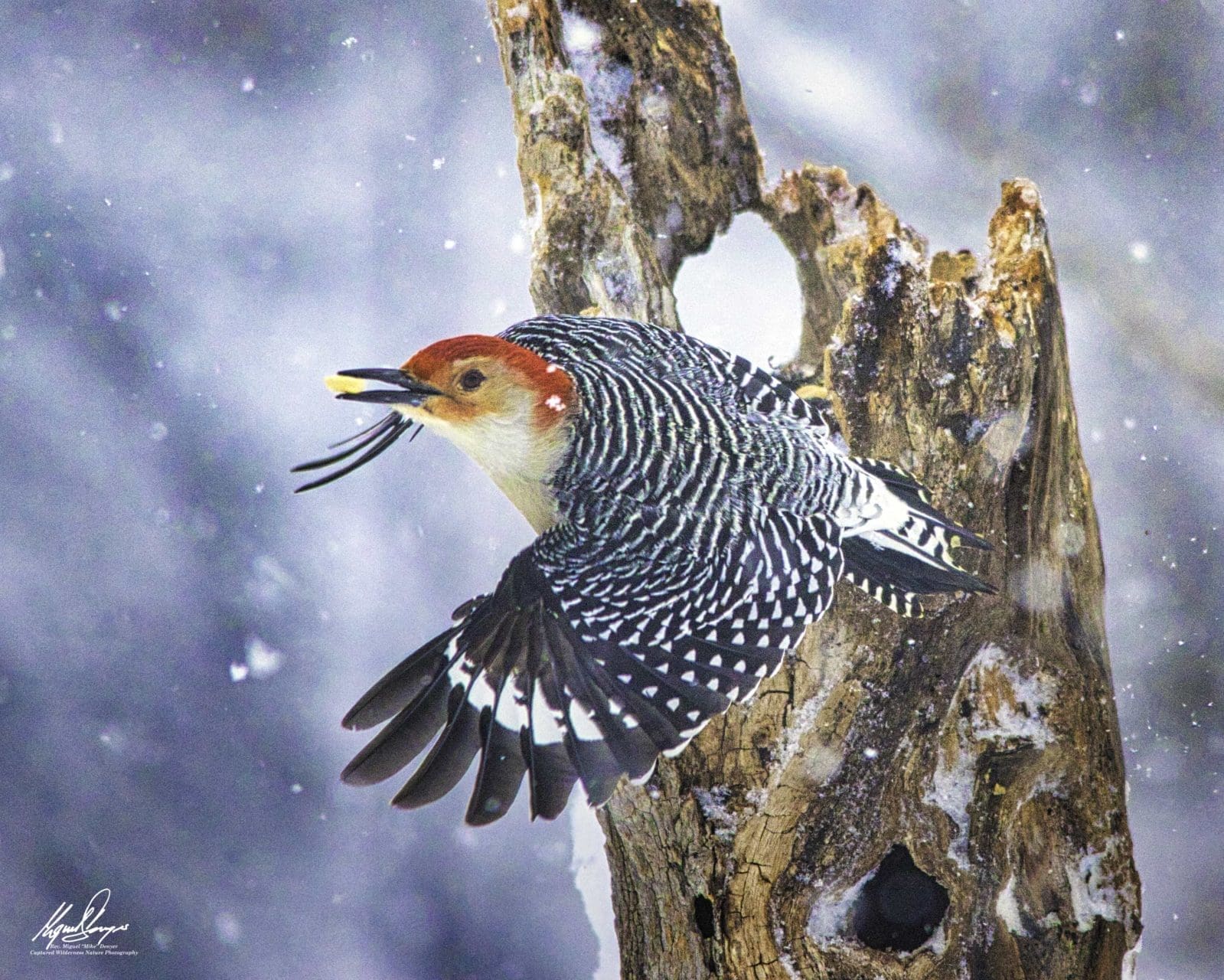The Red-Bellied Woodpecker known scientifically as Melanerpes carolinus, a vibrant and vocal inhabitant of wooded areas across the eastern United States, is easily recognized by its strikingly barred back and brilliantly red cap. Despite its name, the red belly is actually quite subtle and may not be visible in the field. This bird prefers deciduous forests, particularly those with a mix of mature trees, where it can find its favored food sources and nesting sites.

In terms of diet, the Red-Bellied Woodpecker is considered an omnivore but shows a strong preference for insects. It skillfully extracts insects from tree bark with its long, barbed tongue and sharp beak. During colder months, when insects are scarce, it adapts by consuming more plant material, such as seeds, nuts, and fruits, and is often seen visiting bird feeders for suet and sunflower seeds. This adaptability in diet helps it to thrive in a variety of environments, from rural woodlands to suburban parks.
Nesting behavior in these woodpeckers is particularly interesting; they are primary cavity nesters. Each breeding season, pairs take turns chiseling out a new hole in a dead or decaying tree to lay their eggs. These cavities later provide crucial shelters for other species that are unable to excavate their own homes, thus playing a vital role in their habitats.

The communication of Red-Bellied Woodpeckers is marked by distinctive calls and drumming. Their vocalizations, a rolling “churr” sound, and their drumming on trees can be heard throughout their range, serving as communication between mates, a warning to other birds, or as a territorial claim. Observing these woodpeckers, particularly during the early morning or late afternoon when they are most active, provides a delightful experience for any birdwatcher.
Despite the challenges of habitat degradation and competition from other cavity nesters like starlings and house sparrows, Red-Bellied Woodpeckers have adapted well to human presence, increasing their range over recent years. Their ability to thrive in both pristine and modified landscapes highlights their resilience and makes them a compelling subject for conservationists and wildlife photographers striving to capture the essence of America’s diverse birdlife.